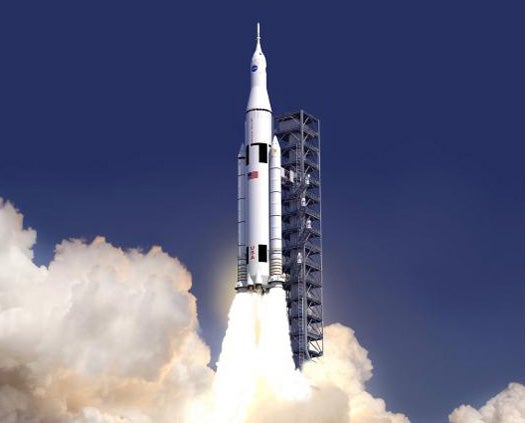Meet NASA’s New Deep Space Rocket
The Space Launch System will be the next NASA-administered launch vehicle to take humans into Earth orbit and beyond

Today, NASA officially announced the design of its forthcoming Space Launch System–a heavy-lift rocket capable of taking humans into deep space. It will be the primary vehicle to replace the Space Shuttle, but with significantly more power—enough to reach Mars.
Resembling the Saturn V in both format and capabilities, the SLS is based around technology developed and honed in the Space Shuttle program. Its core stage rockets are the same RS-25 the shuttle used for main engines, and its strap-on solid rocket boosters are also similar to those used on the shuttle; these solid boosters will be used for initial flights, but NASA hopes to develop cheaper liquid-fueled detachable boosters for later missions. The J-2X engine used in the upper stage is similar to one developed by Rocketdyne for the Saturn V.
The SLS’s payload capacity will range from 70 to 130 metric tons, depending on launch configurations, making it the most powerful launch system since the Saturn V. By utilizing different combinations of the core, upper and booster stages, NASA will be able to efficiently adapt the SLS to a variety of mission types.
And of course, the SLS will carry the Orion multi-use crew capsule, an offshoot from the now-defunct Constellation project. It is capable of carrying a crew of four to six astronauts.
NASA released a computer animation of the new SLS taking to the skies: